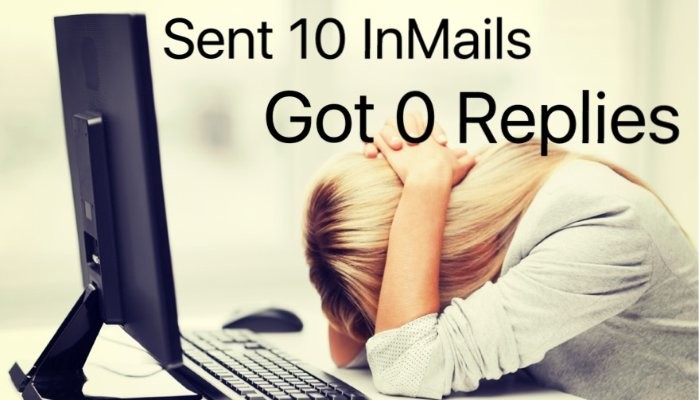[fusion_builder_container background_parallax=”none” enable_mobile=”no” parallax_speed=”0.3″ background_repeat=”no-repeat” background_position=”left top” video_aspect_ratio=”16:9″ video_mute=”yes” video_loop=”yes” fade=”no” border_size=”0px” padding_top=”20″ padding_bottom=”20″ hundred_percent=”no” equal_height_columns=”no” hide_on_mobile=”no”][fusion_builder_row][fusion_builder_column type=”1_1″ layout=”1_1″ spacing=”yes” center_content=”no” hover_type=”none” link=”” min_height=”” hide_on_mobile=”no” class=”” id=”” background_color=”” background_image=”” background_position=”left top” undefined=”” background_repeat=”no-repeat” border_size=”0″ border_color=”” border_style=”solid” border_position=”all” padding_top=”0px” padding_right=”10%” padding_bottom=”0px” padding_left=”10%” margin_top=”” margin_bottom=”” animation_type=”” animation_direction=”left” animation_speed=”0.1″ animation_offset=”” last=”no”][fusion_title title_type=”text” rotation_effect=”bounceIn” display_time=”1200″ highlight_effect=”circle” loop_animation=”off” highlight_width=”9″ highlight_top_margin=”0″ before_text=”” rotation_text=”” highlight_text=”” after_text=”” hide_on_mobile=”small-visibility,medium-visibility,large-visibility” class=”” id=”” content_align=”center” size=”1″ font_size=”” animated_font_size=”” fusion_font_family_title_font=”” fusion_font_subset_title_font=”” fusion_font_variant_title_font=”” line_height=”” letter_spacing=”” margin_top=”” margin_bottom=”” margin_top_mobile=”” margin_bottom_mobile=”” text_color=”” animated_text_color=”” highlight_color=”” style_type=”none” sep_color=”” animation_type=”” animation_direction=”left” animation_speed=”0.3″ animation_offset=””]
5 Reasons People Aren’t Responding to Your InMails
[/fusion_title][fusion_imageframe lightbox=”no” style_type=”none” hover_type=”none” bordersize=”0px” borderradius=”0″ align=”center” linktarget=”_self” animation_type=”0″ animation_direction=”down” animation_speed=”0.1″ hide_on_mobile=”no”]  [/fusion_imageframe][fusion_separator style_type=”none” hide_on_mobile=”small-visibility,medium-visibility,large-visibility” class=”” id=”” sep_color=”” top_margin=”20px” bottom_margin=”” border_size=”” icon=”” icon_circle=”” icon_circle_color=”” width=”” alignment=”center” /][fusion_text columns=”” column_min_width=”” column_spacing=”” rule_style=”default” rule_size=”” rule_color=”” hide_on_mobile=”small-visibility,medium-visibility,large-visibility” class=”” id=”” animation_type=”” animation_direction=”left” animation_speed=”0.3″ animation_offset=””]
[/fusion_imageframe][fusion_separator style_type=”none” hide_on_mobile=”small-visibility,medium-visibility,large-visibility” class=”” id=”” sep_color=”” top_margin=”20px” bottom_margin=”” border_size=”” icon=”” icon_circle=”” icon_circle_color=”” width=”” alignment=”center” /][fusion_text columns=”” column_min_width=”” column_spacing=”” rule_style=”default” rule_size=”” rule_color=”” hide_on_mobile=”small-visibility,medium-visibility,large-visibility” class=”” id=”” animation_type=”” animation_direction=”left” animation_speed=”0.3″ animation_offset=””]
February 1, 2016
[/fusion_text][fusion_separator style_type=”none” top_margin=”50px” alignment=”center” /][fusion_imageframe image_id=”1362|full” max_width=”” style_type=”none” blur=”” stylecolor=”” hover_type=”liftup” bordersize=”0px” bordercolor=”” borderradius=”0″ align=”center” lightbox=”yes” gallery_id=”” lightbox_image=”” lightbox_image_id=”” alt=”” link=”” linktarget=”_self” hide_on_mobile=”no” class=”” id=”” animation_type=”” animation_direction=”down” animation_speed=”0.1″ animation_offset=”” filter_hue=”0″ filter_saturation=”100″ filter_brightness=”100″ filter_contrast=”100″ filter_invert=”0″ filter_sepia=”0″ filter_opacity=”100″ filter_blur=”0″ filter_hue_hover=”0″ filter_saturation_hover=”100″ filter_brightness_hover=”100″ filter_contrast_hover=”100″ filter_invert_hover=”0″ filter_sepia_hover=”0″ filter_opacity_hover=”100″ filter_blur_hover=”0″]https://lindseyboggs.com/wp-content/uploads/2020/04/InMail-No-Replies.jpeg[/fusion_imageframe][fusion_separator style_type=”none” top_margin=”50px” alignment=”center” /][fusion_text columns=”” column_min_width=”” column_spacing=”” rule_style=”default” rule_size=”” rule_color=”” hide_on_mobile=”small-visibility,medium-visibility,large-visibility” class=”” id=”” animation_type=”” animation_direction=”left” animation_speed=”0.3″ animation_offset=””]
LinkedIn’s InMails are a hot topic, and since I live and breathe them daily, I’ve read and heard a lot of feedback – both positive and negative – on using them to prospect. I recently spoke at a conference and it was evident that addressing the theme that they ‘don’t work’ is warranted, hence this direct and hopefully helpful article.
- You send an InMail once or twice. Sure, this seems obvious, but you’d be surprised how many times I ask someone how many times they’ve sent an InMail, and their response is just “once or twice” and they claim it’s not working. Similar to your persistence with cold-calling and -emailing, InMails are simply another way to prospect – and in my experience – one of the most rewarding ways to prospect. Finding your cadence between emailing and InMailing has been a popular topic, and in the end, it all comes down to data. With every 10 InMails I send, I typically get between 5-8 responses, but sometimes it takes up to 8 touches for the response. Again, InMails are simply a new platform, and it doesn’t mean it’s a “one and done” approach.
LinkedIn’s InMails are simply another way to prospect; just because it’s a newer platform doesn’t mean a salesperson can stop being persistent
It’s still sales and it will still take time, just not as much time as the more traditional approach of cold-calling. Pro tip: Go to your sent box and find the original InMail and reply to it (don’t send a net new InMail), and develop your own cadence that’s predictable and repeatable.
- Your subject line sucks. Be personal. If there’s one thing I’m known for it’s being personal in all of your messaging – InMails, Emails, and voicemails. You will get a much higher response rate if you say something personal to them versus something like “Drive more revenue with XYZ Company”. Think about it from their perspective; would you more likely respond to something like “Read your article on your 99 SSI – Go Noles” or “Increased revenue with XYZ Platform”? Find something – mutual connections, college football references, or hobby correlations – and put that in the subject line. I promise your response rate will skyrocket once you start personalizing the subject line.
- You have zero call to action. In every InMail I always specify a specific date for engagement; whether it be an onsite meeting request, or a phone call, there’s always a specific date or week proposed. Just saying “let me know if you’d be interested in meeting” doesn’t get the prospect charged enough to respond. When you hold a specific date – one that’s close – the prospect feels more obligated to respond since it’s right around the corner. I close my InMail with something like “Let me know if you’re open to connecting the week of 2/15 – I appreciate the candor either way”. Pro tip: I intentionally say ‘connecting’ – not ‘meeting’. The moment you say ‘meet’, prospects think that you’ll show them a demo – a big turnoff.
- Your profile isn’t inviting or complete. Having a professional LinkedIn profile matters. Have a profile that represents you – as a person – as well as your company’s offerings. Don’t make it a guessing game in what your company offers, make it clear the second they look at your profile. Have a professional-looking photo; it counts! It’s psychologically harder to say ‘no’ to someone that has a profile picture versus someone that doesn’t. Your LinkedIn profile is your public resume that anyone can access at any given moment; make the first impression count! I recently did a public webinar around this popular topic in building your professional and personal brand; click here to see the entire recorded video presentation.
- You’re connecting before sending an InMail – DON’T DO THIS.
Everyone has seen this image circulating LinkedIn, and you don’t want to be categorized as one of these people. I get connection requests a lot and the people that send me an immediate unpersonalized sales pitch right after I click “accept” get deleted soon thereafter. Always send an InMail when you’re prospecting, and as a general rule of thumb, don’t send a connection request until you’ve had 2-way communication with your prospect.
At the end of the day, you should look at the InMail and ask yourself “would I respond to this”? If the answer is no, tweak it until you would. Then, build yourself a cadence to ensure you’re persistent with InMails just as you would be with cold-calling or cold-emailing. Again, InMails add another layer to your prospecting tactics and tools, but when used correctly could easily become the most effective and have the highest response rate in prospecting.
Questions? Feedback? Would love to address any in the comments below.
[/fusion_text][fusion_social_links show_custom=”no” /][/fusion_builder_column][/fusion_builder_row][/fusion_builder_container]




